- Travel Planning Guide

Europe Travel Cost Rankings
- Travel Budgets
- Country Travel Cost Rankings
- Cheapest Cities
- Country Budget Comparisons
What are the cheapest and most expensive countries to visit in Europe?
The following travel cost rankings for countries in Europe are calculated based on the travel budgets of real travelers. Also referred to as a Travel Cost Index , or a Backpacker Index , the countries below are in order from most to least expensive by their average daily travel price, per person, per day
- 1 Switzerland € 266.00
- 2 France € 233.73
- 3 Liechtenstein € 231.69
- 4 Monaco € 210.99
- 5 Iceland € 190.78
- 6 Luxembourg € 183.97
- 7 Greece € 182.51
- 8 Denmark € 179.50
- 9 United Kingdom € 178.79
- 10 Netherlands € 175.49
- 11 Italy € 166.54
- 12 Andorra € 164.38
- 13 Finland € 157.09
- 14 Germany € 151.52
- 15 Austria € 150.91
- 16 Spain € 150.06
- 17 Ireland € 142.95
- 18 Belgium € 142.20
- 19 Portugal € 136.31
- 20 Sweden € 128.73
- 21 Slovakia € 126.32
- 22 Turkey € 122.06
- 23 Malta € 117.43
- 24 Latvia € 113.66
- 25 Montenegro € 104.13
- 26 Cyprus € 103.44
- 27 Czech Republic € 103.17
- 28 Estonia € 101.94
- 29 Croatia € 94.57
- 30 Slovenia € 93.30
- 31 Norway € 92.74
- 32 Lithuania € 91.97
- 33 Hungary € 77.92
- 34 Romania € 76.95
- 35 Albania € 74.95
- 36 Bosnia and Herzegowina € 68.49
- 37 Bulgaria € 64.04
- 38 Belarus € 62.45
- 39 Russia € 60.69
- 40 Poland € 59.70
- 41 Serbia € 36.55
- 42 Georgia € 30.30
- 43 Armenia € 27.17
- 44 Ukraine € 22.60
- 45 Azerbaijan € 0.00
The Cheapest Cities for Other Regions
Country rankings for other regions, what are the cheapest countries to visit in europe.
The least expensive countries for travel in Europe are currently Azerbaijan (€0.00), Ukraine (€22.60), Armenia (€27.17), Georgia (€30.30), Serbia (€36.55), Poland (€59.70), Russia (€60.69), Belarus (€62.45), Bulgaria (€64.04), and Bosnia and Herzegowina (€68.49).
What are the most expensive countries to visit in Europe?
The most expensive countries for travel in Europe are currently Switzerland (€266.00), France (€233.73), Liechtenstein (€231.69), Monaco (€210.99), Iceland (€190.78), Luxembourg (€183.97), Greece (€182.51), Denmark (€179.50), United Kingdom (€178.79), and Netherlands (€175.49).
Affordable Travel in Europe
Subscribe to our newsletter.
By signing up for our email newsletter, you will receive occasional updates from us with sales and discounts from major travel companies , plus tips and advice from experienced budget travelers!

Pin This Page

- Privacy / Terms of Use
- Activities, Day Trips, Things To Do, and Excursions
- Credit cards
- View all credit cards
- Banking guide
- Loans guide
- Insurance guide
- Personal finance
- View all personal finance
- Small business
- Small business guide
- View all taxes
You’re our first priority. Every time.
We believe everyone should be able to make financial decisions with confidence. And while our site doesn’t feature every company or financial product available on the market, we’re proud that the guidance we offer, the information we provide and the tools we create are objective, independent, straightforward — and free.
So how do we make money? Our partners compensate us. This may influence which products we review and write about (and where those products appear on the site), but it in no way affects our recommendations or advice, which are grounded in thousands of hours of research. Our partners cannot pay us to guarantee favorable reviews of their products or services. Here is a list of our partners .
Travel Inflation Report: May 2024

Many or all of the products featured here are from our partners who compensate us. This influences which products we write about and where and how the product appears on a page. However, this does not influence our evaluations. Our opinions are our own. Here is a list of our partners and here's how we make money .
Table of Contents
How airfares have changed
How hotels room rates have changed, how rental car prices have changed, how restaurant prices have changed, how the price of movies, theaters and concerts has changed, smart money move: use travel rewards cards to book, if you’re planning to travel in 2024 ….
Some good news for travelers: Airfares, car rental and hotel prices in April were down compared to the same month last year. Falling travel prices is a bright spot for customers, considering that the price of pretty much everything else is going up. In fact, average consumer prices across all items rose 3.4% year-over-year through April.
According to NerdWallet's Travel Price Index, the overall cost of travel is down 1% from the same month in 2023 and up 15% compared with April 2019 (the last fully-normal April before lockdowns). In short, expect the same trip taken this year to cost slightly less than it did this time last year, but more than it would if you had taken the trip before the pandemic.
Despite travel costs declining year-over-year, there are still things you can do to reduce the price of your trip. Check out our smart money suggestions below.
NerdWallet's Travel Price Index combines data from individual travel categories tracked by the Bureau of Labor Statistics' Consumer Price Index data, such as airfares, lodging, meals and rental cars.
Overall prices for the past 12 months through April 2024 rose 3.4% before seasonal adjustment. Still, not every individual line item experiences inflation at the same rate — especially when it comes to travel prices. Some types of trips might actually be more or less expensive than in the past, depending on if your trip involves airfare versus driving, if you’re staying in a hotel and whether it involves a rental car.
To help you better understand how travel prices have changed, NerdWallet honed in on five categories:
Car rentals.
Food away from home.
Movies, theaters and concerts.
NerdWallet then compared those costs to their same prices a month ago and a year ago. And given how significantly COVID-19 altered the state of travel, the data also compares today’s prices to the same cost of those things pre-pandemic. For example, April 2024 is compared to April 2019 as the last corresponding pre-pandemic month.
Here’s what today’s travel prices look like:
When comparing April 2024 prices versus April 2023, U.S. airfares are down 5.8%. Compared to pre-pandemic prices, airfares are about 3.2% in April 2024 versus April 2019. That's not a lot considering average prices as a whole are up by 22.7% since April 2019.
Prices for lodging away from home — including hotels and motels in U.S. cities — did increase 1% month-over-month. Though, they are actually slightly down from last year, falling by 0.4% versus April 2023.
Unlike airfares that are barely higher than pre-pandemic prices, hotel and motel prices are significantly higher than what they were pre-pandemic — though still not as high as the 22.8% all-items average increase.
High rental car prices were one of the biggest stories of pandemic-era travel. Though prices have leveled off, they are still up an astounding 36.1% versus the same month in 2019. Still, the costs are better now than they were a year ago. Car rental prices are down 10.1% year-over-year.
Food prices consistently rise nearly every month, and this month was no exception. In April 2024, the cost of food away from home was up 4.2% versus the same month in 2023.
And prices are far higher than pre-pandemic, with April 2024 prices coming in at 29.4% higher than what they were in April 2019. That's higher than the inflation rate across all items, suggesting that restaurant prices have risen more than many other categories of goods.
Like restaurants, entertainment prices see fairly consistent increases — save for a small dip in 2020. Prices are now up 22.2% from what they were in March 2019, basically in line with the general rate of inflation.
The price for tickets to movies, theaters and concerts is up 3.4% year-over-year.
Paying for travel with points and miles versus cash isn’t as daunting a task as it may seem. Frequent flyer miles and hotel points can be accrued not just for recurring travel, but through other outlets as well. Credit card rewards and welcome bonuses can be one of the most popular ways to accrue a big stash of points for a lot less effort than living your life out of a suitcase.
In addition, travel credit cards can offer various money saving perks, like:
Complimentary trip insurance .
Savings on checked bags .
Waived foreign transaction fees .
Airport lounge access .
Cash back credits that can offset the annual fee.
Here's a sampling of cards that offer travel-related statement credits.

on Chase's website

on Bank of America's website

on Citibank's application
• 10 points per $1 on Chase Dining, hotel stays and car rentals purchased through Chase.
• 5 points per $1 on air travel purchased through Chase.
• 3 points per $1 on other travel and dining not booked with Chase.
• 1 point per $1 on other purchases.
• 5 points per $1 on prepaid hotels and car rentals booked directly in the Altitude Rewards Center.
• 3 points per $1 on eligible travel purchases and mobile wallet spending on Apple Pay, Google Pay and Samsung Pay.
• 1 point per $1 on all other purchases.
• 10 ThankYou® points per $1 spent on hotels, car rentals and attractions booked through the Citi Travel site.
• 3 points per $1 on air travel and other hotel purchases.
• 3 points per $1 on supermarkets.
• 3 points per $1 on gas stations and EV charging stations.
• 3 points per $1 on restaurants.
$300 annual travel credit .
$325 annual credit.
$100 in airline incidental statement credits.
If you’re building your next vacation budget based on an early-pandemic-era trip, expect to pay far more now for pretty much every expense. Yet even though prices constantly feel like they’re getting higher, you can still save on travel with a little planning.
To avoid the costs of eating out, head to local grocery stores — which can be a fun activity on its own — or pack snacks from home. While in an airport, head to the lounge. Many credit cards have partnerships with airport lounge operators ( Priority Pass is a popular one) where you can typically expect complimentary snacks and drinks.
Methodology
NerdWallet conducted an analysis of the Bureau of Labor Statistics’ Consumer Price Index data released by the U.S. Department of Labor, which was most recently updated in May 2024 and measures prices of items like travel, groceries and cars. Prices usually change every month, but some prices change more than others.
Keep in mind, this data is based on April 2024 information, even though it is released in May 2024, so prices you actually see may have actually improved (or gotten even worse) than this data, because it lags one month behind.
And even within the realm of travel, some expenses might go up, while others might go down.
The NerdWallet Travel Price Index combines data from the Consumer Price Index, weighted by the estimated spending in each category, which is based on 2019 travel expenditure data from the BLS.
Here are the spending categories considered, and how heavily each was weighted:
Flights: 29%.
Car rental: 13%.
Lodging: 30%.
Entertainment: 7%.
How to maximize your rewards
You want a travel credit card that prioritizes what’s important to you. Here are our picks for the best travel credit cards of 2024 , including those best for:
Flexibility, point transfers and a large bonus: Chase Sapphire Preferred® Card
No annual fee: Bank of America® Travel Rewards credit card
Flat-rate travel rewards: Capital One Venture Rewards Credit Card
Bonus travel rewards and high-end perks: Chase Sapphire Reserve®
Luxury perks: The Platinum Card® from American Express
Business travelers: Ink Business Preferred® Credit Card

1x-5x 5x on travel purchased through Chase Travel℠, 3x on dining, select streaming services and online groceries, 2x on all other travel purchases, 1x on all other purchases.
75,000 Earn 75,000 bonus points after you spend $4,000 on purchases in the first 3 months from account opening. That's over $900 when you redeem through Chase Travel℠.

1.5%-5% Enjoy 5% cash back on travel purchased through Chase Travel, 3% cash back on drugstore purchases and dining at restaurants, including takeout and eligible delivery service, and unlimited 1.5% cash back on all other purchases.
Up to $300 Earn an additional 1.5% cash back on everything you buy (on up to $20,000 spent in the first year) - worth up to $300 cash back!

on Capital One's website
2x-5x Earn unlimited 2X miles on every purchase, every day. Earn 5X miles on hotels and rental cars booked through Capital One Travel, where you'll get Capital One's best prices on thousands of trip options.
75,000 Enjoy a one-time bonus of 75,000 miles once you spend $4,000 on purchases within 3 months from account opening, equal to $750 in travel.


- Australasia
- Central America
- North America
- South America
- Buenos Aires
- Mexico City
- New York City
- Rio de Janeiro
- Overwater bungalows
- Cruise tips
- Sightseeing Passes
- Attractions
- Theme parks
- When to visit where
Backpacker Indexes
Sign up for our monthly Priceoftravel newsletter
Price of Travel launched in 2010 to help travelers figure out just how cheap and how expensive the most popular destinations are around the world. Late that same year we launched our 2011 Backpacker Indexes, which ranked all of the destinations from cheapest to most expensive based on a fixed group of common items for budget travelers. We have expanded and updated our backpacker indexes each year since, and we continue to rank well over 100 destinations around the world by price.
Here are our main backpacker index articles for each region as well as the World backpacker index so you can see all of them on one handy list.
Travel Europe on a Budget
The Savvy Backpacker
City Price Guides For Budget Travel
City guides .\33 a132798-3f3b-4585-954d-7e70cf863447{fill:#231f20}.
“How much does it cost to go backpacking through Europe?” That’s the question everyone wants to know.
This is why we created our Europe City Price Guide Series. Each cost guide outlines how much you can expect to spend during an average day while traveling on a backpacker’s budget. The daily cost consists of a night in a hostel, three meals, a snack/adult beverage, an attraction, and daily public transportation.
Note: These daily travel cost guides are designed for budget-minded travelers— so you may want to add a little extra wiggle room to your daily budget for those times you can’t find the best deals or want to splurge a little.
Europe Budget Travel City Price Guides
Amsterdam, netherlands.
Average Daily Budget Travel Cost: €70-€120 (Approx. $75-$130)
Amsterdam is a world-class city that’s become a popular destination for multiple reasons — but cheap prices aren’t one of them. See the complete price guide for Amsterdam
Antwerp, Belgium
Average Daily Budget Travel Cost: €55-€80 (Approx. $60-$85)
While Antwerp is best known as the center of the diamond trade, it’s actually a hidden gem thanks to its medieval architecture, vibrant nightlife, fashion scene, and art. See complete price guide for Antwerp
Athens, Greece
Average Daily Budget Travel Cost: €55-€75 (Approx. $58-$79)
Athens is one of the most popular cities to visit — mainly for the many grandiose ancient ruins. See complete price guide for Athens
Barcelona, Spain
Average Daily Budget Travel Cost: €36- €66 ( $42- $77 USD)
If you hunt for a cheap place to stay Barcelona ends up being a fairly good value — by Western Europe standards. See complete price guide for Barcelona
Berlin, Germany
Average Daily Budget Travel Cost: €36- €57 (Approx. $42-$65)
Berlin has been the cheapest capital city in Western Europe for years so it has always attracted budget travelers. Prices are rising but there are plenty of great deals to be found on lodging and food. See complete price guide for Berlin
Bruges, Belgium
Average Daily Budget Travel Cost: €37-€65 (Approx. $43-$76)
Bruges isn’t the cheapest place to visit but most travelers spend just a day or two in this fairytale village — so it shouldn’t hurt your budget. See complete price guide for Bruges
Brussels, Belgium
Average Daily Budget Travel Cost: €48-€71 (Approx. $52-$78)
Brussels is home to the EU parliament and many jet-set business professionals — which means prices are high. See complete price guide for Brussels
Budapest, Hungary
Average Daily Budget Travel Cost: Approx. $20-$45
Budapest has a lot of great stuff going for it — a great nightlife scene, beautiful architecture, loads of history, and super cheap food, alcohol, and accommodations. See complete price guide for Budapest
Cologne, Germany
Average Daily Budget Travel Cost: €38-€54 (Approx. $40-$58)
Germany’s fourth largest city has an amazing cathedral, great beer and the prices are affordable. See complete price guide for Cologne
Copenhagen, Denmark
Average Daily Budget Travel Cost: Approx. $62-$95
Copenhagen is beautiful but it certainly isn’t cheap — especially alcohol and food. You can find ways to save but it’s going to take some effort. See complete price guide for Copenhagen
Dubrovnik, Croatia
Average Daily Budget Travel Cost: Approx. $43 -$63
Nicknamed the “Pearl of the Adriatic,” Dubrovnik is Croatia’s most popular destination and one of the most beautiful walled cities in the world. It is a little more expensive than other cities in the region but it’s certainly worth the visit if you’re in the neighborhood. See complete price guide for Dubrovnik
Dublin, Ireland
Average Daily Budget Travel Cost: €40-€64 (Approx. $47-$75)
Dublin can be reasonably affordable or expensive — it depends on your drinking habits. So while you can’t expect to find many good deals on alcohol (or food for that matter), you can probably find a reasonably priced hostel. See complete price guide for Dublin
Edinburgh, Scotland
Average Daily Budget Travel Cost: £32-£59 (Approx. $43-$78)
Scotland uses the pound so automatically prices are going to be higher thanks to the unfavorable exchange rate. Avoid the city during the summer festival season if you’re on a budget because prices for hostels and hotels increase dramatically. See complete price guide for Edinburgh
Florence, Italy
Average Daily Budget Travel Cost: € 42-€61 (Approx. $50-$72)
Florence is generally a good deal so you can experience the city without spending a fortune. Do budget extra for all the amazing gelato because you’ll probably find yourself eating it every day. That said, cheap hostel beds get snatched up quickly in the summer. See complete price guide for Florence
Hamburg, Germany
Average Daily Budget Travel Cost: € 39-€65 (Approx. $46-$76)
Even though it’s Germany’s second largest city, Hamburg is overshadowed by Berlin’s and Munich’s tourism draw. Hamburg is actually a very modern city so it has a much different vibe than the stereotypical “quaint” Germany — although is does have plenty of old-world charm. See complete price guide for Hamburg
Krakow, Poland
Average Daily Budget Travel Cost: Approx. $20-$35
Krakow is cheap — the hostels are cheap (but still great quality), the alcohol is cheap, and the food is cheap. But as more people learn about the amazing town the more prices will rise… so visit sooner than later. See complete price guide for Krakow
Lisbon, Portugal
Average Daily Budget Travel Cost: €24- € 38 (Approx. $27-$43)
Lisbon is a beautiful hilly coastal city famous for its pastel buildings, cafe culture, and Fado music. It’s also very friendly on the wallet when compared to other Western European cities. See complete price guide for Lisbon
London, England
Average Daily Budget Travel Cost: £45-£75 (Approx.$65-$110)
London is going to hurt your budget so you’ll have to get creative if you want to experience this city without going broke. However, the government-run museums are both world class and completely free. See complete price guide for London
Madrid, Spain
Average Daily Budget Travel Cost: €32-€56 (Approx. $37-$64)
Madrid is a ton of fun and easy on the budget — especially by western Europe standards. Take advantage of free tapas (when you purchase alcohol) for a cheap meal. See complete price guide for Madrid
Milan, Italy
Average Daily Budget Travel Cost: €34-€60 (Approx. $40-$70)
Not only is Milan is Italy’s fashion and business center, but it’s also home to da Vinci’s The Last Supper and the amazing Duomo Cathedral. See complete price guide for Milan
Munich, Germany
Average Daily Budget Travel Cost: €40-€65 (Approx. $45-$75)
The capital of Bavaria and the home to beer gardens, giant pretzels, and quintessential Germany. See complete price guide for Munich, Germany
Naples, Italy
Average Daily Budget Travel Cost: €32-€50 (Approx. $35-$56)
They say Rome is Italy’s heart and Naples is its soul — maybe this soul comes from the fact that Naples is one of Europe’s poorer (but also affordable) cities. See complete price guide for Naples
Nice, France
Average Daily Budget Travel Cost: €37-€60 (Approx. $42-$70)
Located on the Côte d’Azur (The French Riviera), Nice is a cheaper destination than the ultra-lux destinations of Monaco and Cannes. See complete price guide for Nice
Paris, France
Average Daily Budget Travel Cost: €40-€80 (Approx. $50-$90)
Everyone needs to see Paris. True, it isn’t a cheap place to visit (especially the hostels and hotels) but there are plenty of ways to save. See complete price guide for Paris
Prague, Czech Republic
Average Daily Budget Travel Cost: Approx. $23-$40
Prague looks like you’ve stepped into a fairytale and the prices are great too! Ok, prices have been steadily rising but you can easily experience the city without spending much cash. See complete price guide for Prague
Reykjavik, Iceland
Average Daily Budget Travel Cost: Approx. $70-$105
Reykjavik is expensive… and that’s just to stay in the city. If you want to explore nature (which is the best reason to visit Iceland) you’ll have to shell out a lot more money. See complete price guide for Reykjavik
Riga, Latvia
Average Daily Budget Travel Cost: €25-€40 (Approx. $30-$50)
Riga’s cheap prices, super cheap booze, bustling nightlife, and beautiful scenery make it an ideal location for budget travelers… except that it’s physically located away from the normal budget traveler’s trail. See the complete travel price guide for Riga
Rome, Italy
Average Daily Budget Travel Cost: €40-€70 (Approx. $46-$80)
Rome is on just about every European itinerary. The prices actually aren’t too bad considering its popularity but it can get expensive if you’re not careful. See complete price guide for Rome
Seville, Spain
Average Daily Budget Travel Cost: €40-€55 (Approx. $45-$70)
Seville is a beautiful and compact city that’s worth visiting for a few days. It’s prices are reasonable and its laidback vibe will make you want to spend multiple nights chowing down on tapas. See the complete travel price guide for Seville
Stockholm, Sweden
Average Daily Budget Travel Cost: 550 SEK-840 SEK (Approx. $62-$93)
Stockholm is a beautiful city. It is also expensive. As in, it’s one of the most expensive cities to visit. If you do go, you may want to keep your trip short if you’re on a tight budget. See complete price guide for Stockholm
Venice, Italy
Average Daily Budget Travel Cost: €51-66 (Approx. $60-$75)
One of the most picturesque cities in the world that has to be seen — even if it’s expensive and overrun with tourists. See complete price guide for Venice
Vienna, Austria
Average Daily Budget Travel Cost: €40-€62 (Approx. $46-$70)
The gorgeous capital of Austria that’s been dubbed the City of Music. It can be a little expensive but thanks to its inexpensive accommodation and budget food options it ends up being cheaper than other comparable cities. See complete price guide for Vienna
New York City
New York City is the most visited city in the US and my current home so I put together an NYC Price Guide to help you budget for your next trip to the Big Apple.
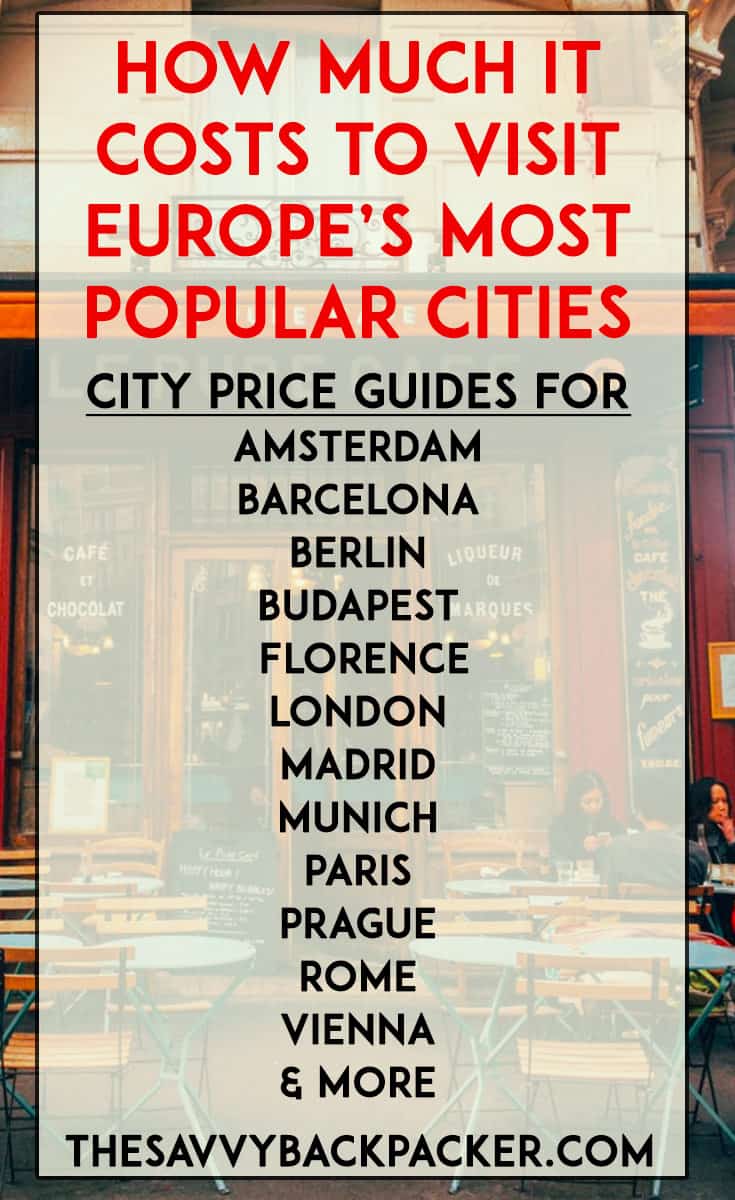

Budget Travel Newsletter
The best budget travel tips sent straight to your inbox.
Join My Journey
Europe travel tips, advertising & privacy policies.
TheSavvyBackpacker.com is a participant in the Amazon Services LLC Associates Program, an affiliate advertising program designed to provide a means for sites to earn advertising fees by advertising and linking to amazon.com.
© 2010 - 2024 The Savvy Backpacker
Website Design by FHOKE
Search Results
Prices for travel during the COVID-19 pandemic: is there commonality across countries and items?
Prepared by Eliza Lis and Jakob Nordeman
Published as part of the ECB Economic Bulletin, Issue 1/2021 .
Inflation for travel-related items has plummeted in the euro area during the coronavirus (COVID-19) pandemic. Services inflation in general has deteriorated recently reaching a trough in October 2020. The main driver behind the decline has been the strong drop in inflation for travel-related services (here referring to package holidays, accommodation services, and passenger transport by air), despite its relatively moderate weight in HICP services (Chart A). [ 1 ] This likely reflects the nature of the containment and lockdown measures taken across the euro area. [ 2 ] Given that the impact of lockdown measures on inflation has been particularly visible in those countries that are heavily exposed to tourism [ 3 ] , this box analyses the potential commonalities in travel-related items affected by COVID-19 lockdowns pulling down services inflation across the euro area countries.
Developments in services inflation and services inflation excluding travel-related items
(annual percentage changes)

Sources: Eurostat and ECB calculations. Notes: Travel-related items include (i) package holidays, (ii) accommodation services, and (iii) passenger transport by air.
The decline in travel-related services inflation in the euro area is broad-based across its included items (i.e. package holidays, accommodation and passenger transport by air). [ 4 ] The drop in inflation rates for passenger transport by air contributed most to the overall decline (about 45%) followed by accommodation services, while package holidays contributed the least to the decline (Chart B, panel a). [ 5 ] Usually, travel-related service items show high seasonality, reaching a price-level peak during the summer months. In 2020, the price levels for accommodation services and passenger transport by air (vis-à-vis January) have, since the summer, been below their relative average levels of previous years, and substantially lower than the price levels observed in 2019 (Chart B, panel b). Furthermore, the strong seasonal upward impact on price levels for passenger transport by air, which usually occurs in the summer months, was more muted in summer 2020. Taken together, this implies that the price level for accommodation services and passenger transport by air has been lower since the pandemic started.
Drivers of travel-related services inflation
(panel a: annual percentage changes, percentage point contributions with respect to February 2020; panel b: index January=100)
Contributions

Seasonality

Sources: Eurostat and ECB calculations. Notes: The weights for package holidays, accommodation services, and passenger transport by air in travel-related services shown in brackets in panel a. The bars in panel a refer to cumulative contributions to the change in HICP travel-related services inflation since February 2020, and the horizontal line refers to HICP travel-related services at that date.
The international component of travel-related services has been the main driver of the historical contraction in inflation for travel-related services overall (Chart C). This is amplified for both package holidays and passenger transport by air because the weight of the international component [ 6 ] amounts to around 85% for the euro area. [ 7 ] In comparison, domestic tourism remained relative resilient in many euro area countries and the decline in the annual rates of change for prices of domestic holidays and flights was milder. [ 8 ]
Inflation of domestic and international components of package holidays and passenger transport by air
(annual percentage changes, percentage point contributions with respect to February 2020)
Package holidays

Passenger transport by air

Sources: Eurostat and ECB calculations. Notes: The weights of the domestic and international components of both package holidays and passenger transport by air are shown in brackets.
During the initial lockdowns in the second quarter of 2020, the pass through to prices in travel-related services lagged. [ 9 ] There are various reasons for the initial persistence in travel-related inflation. First, social distancing and direct restrictions on mobility (and/or indirectly via quarantine requirements) implied that even if firms had reduced prices, demand was likely to remain low or absent. Second, firms may have preferred to delay price changes until restrictions were lifted to avoid additional menu costs. Third, published price indices in the second quarter of 2020 were based on elevated degrees of price imputation and thus may not have captured the underlying negative economic impact during that period. [ 10 ] Instead, inflation rates generally reflected developments in past data from 2019. Once these effects faded, weak demand came more clearly to the fore in the third quarter of 2020. [ 11 ]
The recent upward movement in inflation rates for travel-related services may be affected by a renewed increase in imputation rates. Many euro area countries recently re-imposed strict lockdown measures, which caused imputation shares to rise. In the fourth quarter of 2020 the imputed prices were concentrated in the services sector with an imputation share of around 20% for the euro area. During that quarter the indices for package holidays and accommodation services in the euro area were flagged as unreliable. [ 12 ] Similar to the lockdown during the second quarter in 2020, imputed prices and postponement of price reviews by firms might not reflect the actual price pressures.
All euro area countries have experienced a decline in travel-related services inflation compared to their pre-pandemic levels (Chart D). However, there is some country heterogeneity related to both the magnitude of the decrease and the main contributing items. By and large, countries which are usually net exporters of travel services also showed the largest drop in travel-related services inflation compared to February 2020. [ 13 ] The most common contributing item to the sharp decline in travel-related services inflation across countries is prices for passenger transport by air. While inflation for accommodation services also contributed heavily in many southern European countries, package holidays have been a major source of the decline in Germany [ 14 ] and the Netherlands. [ 15 ]
Developments in travel-related services inflation across euro area countries
(changes with respect to February 2020, percentage point contributions)

Sources: Eurostat and ECB calculations.
Looking ahead, uncertainty around the outlook for inflation in travel-related services has increased. While lockdown measures have been gradually re-imposed, vaccination campaigns have started across the euro area. If lockdowns become tighter, imputation shares are likely to increase for travel-related items. Firms might hold back on price changes as demand is rather inelastic to price changes in the current circumstances. These factors may hamper the interpretation of actual price pressures. Once lockdown restrictions are lifted again, the normal interplay of price adjustments by firms will be resumed but their size and nature will depend on the prevailing demand and supply conditions. By and large, the outlook for travel-related services inflation remains uncertain as both upside and downside risks may materialise depending on the progression of the COVID-19 pandemic.
- Package holiday prices are recorded in the country where the trip starts, although the largest part of the underlying service may be provided in the travel destination. The price of the package holiday is still likely to reflect price developments for accommodation, restaurants and other similar services in the travel destination.
- It should be kept in mind that the lockdowns have led to large changes in consumer spending patterns that have not been reflected so far in official inflation statistics. For a detailed discussion of pandemic-induced changes in household consumption and their implications for inflation see the box entitled “Consumption patterns and inflation measurement issues during the COVID-19 pandemic”, Economic Bulletin, Issue 7, ECB, 2020.
- See the box entitled “Developments in the tourism sector during the COVID-19 pandemic”, Economic Bulletin, Issue 8, ECB, 2020.
- In 2020 the travel-related services amounted to approximately 10% of the weight in euro area services HICP.
- From February 2020 inflation for passenger transport dropped by about 20 percentage points, reaching a trough in October 2020. In the same period, inflation for accommodation services fell by about 7.5 percentage points, reaching a trough in September 2020. Similarly, inflation for package holidays dropped by about 5.5 percentage points, reaching a trough in August 2020.
- Prices for international flights includes flights between euro area countries and flights to countries outside the euro area. Domestic flights cover only flights within a euro area country.
- For accommodation services, a more granular breakdown would include (i) hotels, motels, inns and similar accommodation services, (ii) holiday centres, camping sites, youth hostels and similar accommodation services, as well as (iii) accommodation services of other establishments. Such a breakdown does not distinguish between domestic and other guests.
- The decline in inflation for domestic flights amounted to about 10 percentage points between February and July 2020, whereas it was about 20 percentage points for international flights. Inflation rates of domestic package holidays observed a dip in July and August 2020, but they stayed relatively resilient before and thereafter.
- See the article entitled “The role of demand and supply factors in HICP inflation during the COVID-19 pandemic – a disaggregated perspective”, in this issue of the Economic Bulletin.
- For services in general the imputation share reached above 40% in April 2020 for the euro area as whole. In some euro area countries imputation shares were higher and for some travel-related services they even reached 100%.
- Notwithstanding a decline in imputation rates in the third quarter of 2020, some countries had imputed rates for travel-related services items. For example, when looking at the large euro area countries, passenger transport prices were imputed in Germany throughout the third quarter of 2020 and in Italy in July and August 2020.
- Passenger transport by air has been flagged as unreliable in some EU Member States but not at the euro area level.
- See the box entitled “Developments in the tourism sector during the COVID-19 pandemic”, Economic Bulletin , Issue 8, ECB, 2020.
- In Germany some of the impact is also due to the German VAT rate cut in July 2020.
- Methodologically, the item package holidays has a prominent weight, mainly in Germany, Spain and the Netherlands, when considering the five largest euro area countries.
Our website uses cookies
We are always working to improve this website for our users. To do this, we use the anonymous data provided by cookies. Learn more about how we use cookies
We have updated our privacy policy
We are always working to improve this website for our users. To do this, we use the anonymous data provided by cookies. See what has changed in our privacy policy
Your cookie preference has expired

Travel costs in Europe: Which country costs what?
Planning a trip to Europe? Congratulations! Chances are if you are reading this you are new to travelling or at least new to the continent of Europe. Well, fear not, I’ve got you covered! I have been travelling to Europe solo for the last 8 years. My first experience was daunting and overwhelming, but since then I have visited at least once a year and sometimes up to five times a year. So if you are wondering about the travel costs in Europe, get your notepad ready! I’ve got all of the information below to help you plan and budget for your trip.

Travel Costs in Europe by Country
So you’re planning a trip to Europe – exciting times! Europe is by far my most favourite part of the world to explore – so much so that I make sure I visit every year.
But you will soon realise Europe is expensive if you don’t know where to go for your budget. Below I will break down the average daily cost of visiting each popular tourist country, as well as how to save money along the way.
For reference, the below prices are costs per person, per day, on average spend. While this budget is a generalisation, you could easily budget to spend less or splurge and spend more. To put it simply, they’re somewhere in the middle! Prices for travel costs in Europe are accurate at the time of publishing in 2020.

The most Expensive Countries in Europe
Daily cost: €182.19
The most expensive country in Europe on a daily basis goes to France. This probably doesn’t come as a surprise to many of you – I know I’m not shocked after many trips to Paris!
But the high cost of visiting France is slightly inflated because of Paris. Most travellers visit Paris for a few days of jam-packed sightseeing and then hot tail it out of there to other European cities.
Tips for budgeting:
If you want to save money in France, venture beyond Paris. Food is very affordable throughout the country and even in Paris if you know where to go (hint: its the latin quarter).
Stay at an Airbnb instead of a hotel. They’re way more affordable and you’ll have a much more local experience.

Switzerland
Daily cost: €181.55
Another country I’m sure no one is surprised to see topping this list is Switzerland. Honestly just looking at things in expensive feels expensive! Breathing the clean mountain air feels expensive!
Shorten your stay. No matter which way you look at it, Switzerland is expensive in every way imaginable. If you have friends or family you can stay with, this will cut out a huge portion of the cost.
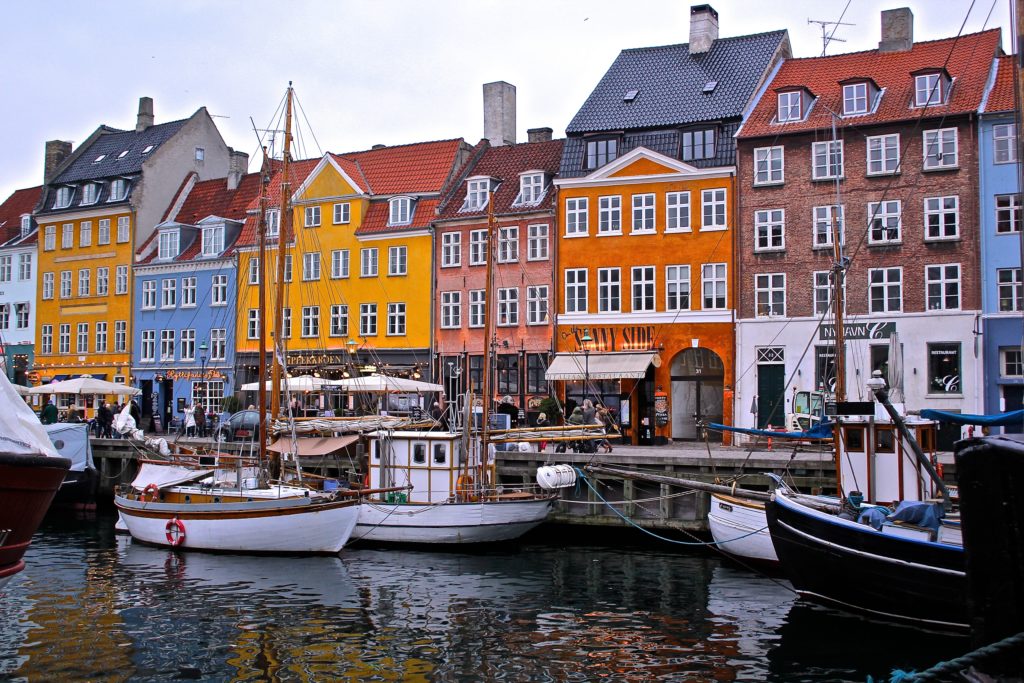
Daily cost: €161.46
I visited Denmark in my early twenties and it was so expensive I gave up converting prices and just decided I couldn’t afford anything. If I remember correctly, I ate supermarket sandwiches for dinner and washed them down with a coke zero. Très chic!
Stay outside of Copenhagen. This is notoriously one of the most expensive cities in Europe. I can personally vouch for that!

Daily cost: €133.63
I knew before I visited Iceland that it was going to be an expensive trip. The flight itself was a steal (Barcelona to New York via Reykjavik), offering a cheap stopover en route to NYC.
Iceland is expensive in terms of hotels, food, petrol and entrance fees. Even to visit the waterfalls you need to pay an entrance fee!
Road trip between destinations and travel with a friend to split the costs. Affordable hotels are available throughout the country, especially where there is more demand in Reykjavik.
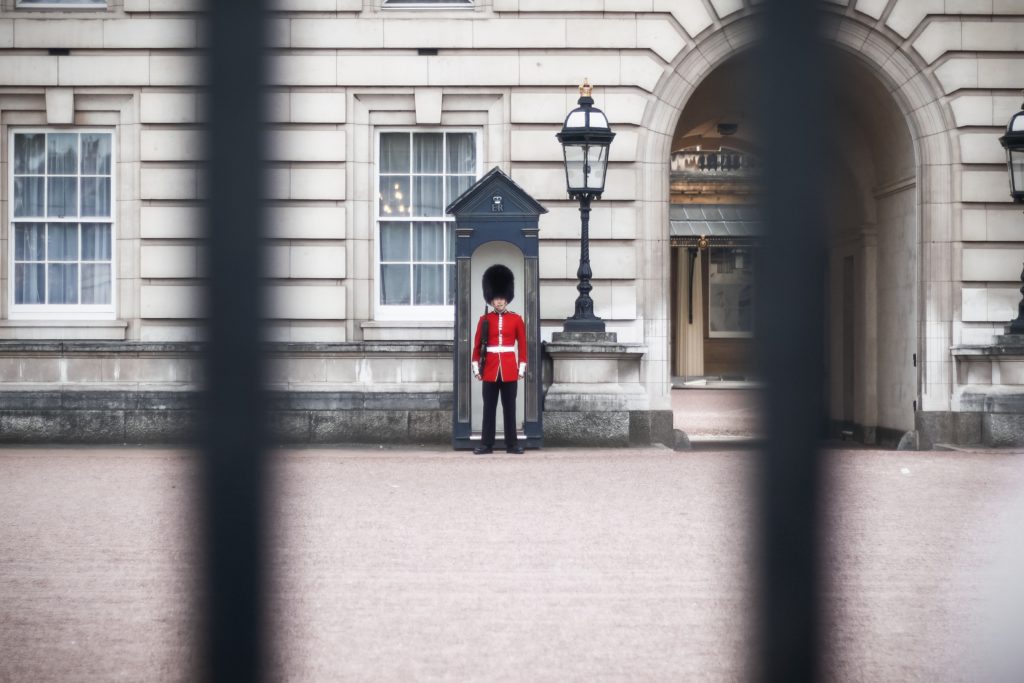
United Kingdom
Daily cost: €127.40
When you visit Europe for the first time it is highly likely London will be on your agenda. And for good reason! This iconic city is year after year the most visited city in the world. The main expense when visiting the United Kingdom is accommodation. It doesn’t help that the pound always performs favourably to most other world currencies.
Waitrose and Sainsbury’s are your friend. You can grab a quick sandwich snack to eat on the go and skip the expensive restaurants. Many if London’s museums are free, as are the parks and just walking around Soho will fill an entire day of entertainment. Other cities outside of London are much more affordable to visit.

Daily cost: €124.14
This one may come as a bit of a surprise to you, because with cheap pizza and house wines, how could it be expensive!? While the food is affordable, the price to travel through Italy quickly adds up. Cities like Rome, Venice and Florence are the most expensive.
Get outside of the touristic cities and stay in small towns. Instead of staying in Florence, try Lucca. Instead of staying in Venice, stay in Verona. You can always take a train and make day trips!

Netherlands
Daily cost: €122.66
When you think of the Netherlands , you think of Amsterdam. That’s normal! But I promise you there is so much more to the Netherlands beyond the city of Amsterdam. Besides, other cities are much cheaper to visit! The average price per day spent in the Netherlands is €122.66 . But you can easily save money with these few tips.
Check in to an Airbnb in Amsterdam or a local hostel if that’s your style. You can also save money by splitting the cost with a friend. Street food is readily available in major cities and is not only cheap but tasty!

Daily cost: €120.73
Finland is an expensive country to visit whether you’re in the capital, Helsinki , or further afield in small towns.
Try staying with a local family for a local experience. I stayed with a family in the lakes district and not only was it affordable but also gave me an insight into the local culture.

Daily cost: €112.67
The most expensive city to visit in Sweden is Stockholm. But don’t let that stop you! There are some great free attractions plus the public transport is easy to use.
Use the public transport and swap restaurants for cheap eats and supermarket lunches. If your accommodation offers breakfast, make this your biggest meal of the day.

Somewhere in the Middle
Daily cost: €111.96
Spain is reasonably expensive to visit but as soon as you exit the big cities (like Barcelona and Madrid) it becomes a lot more affordable.
Swap big cities for small towns. Indulge in tapas and kick back with a jug of sangria!

Daily cost: €110.33
Greece can be expensive but it doesn’t have to be. There are some great ways to save money, especially if you aren’t short on time. Local ferries are a great option for island hopping and they’re much more affordable than flying between the islands.
Use local transport to save on travel costs between the islands. It will take a little longer but it is the journey, not the destination that matters! If you are carefully considering travel costs in Europe, sometimes you have to sacrifice time to save money.

Daily cost: €109.47
Ireland is one of my favourite countries to explore in Europe. It is so naturally beautiful and sets the scene for a perfect road trip! As soon as you leave Dublin, the country becomes much more affordable to enjoy.
Road trips are a great way to see this country but public transport is much more affordable if you’re on a budget.

Daily cost: €106.78
Germany is in the heart of Europe, meaning it is really well connected with trains. This makes for a great adventure by land and will also save you money. The large cities like Berlin, Cologne and Munich are much more expensive than the countryside.
Swap the major cities for countryside escapes.

The Cheapest Countries in Europe
Daily cost: €18.75
Serbia is the most affordable country on a day-to-day cost analysis. If you are carefully considering travel costs in Europe, Serbia is a great option for budget travellers. Belgrade is a surprising city with so much to offer visitors and I can highly recommend it!

Daily cost: €23.00
Ukraine is another great choice for travellers considering travel costs in Europe. The local transport might seem daunting at first (as no signs are in English). However, you would be surprised how much you can converse with hand gestures and broken English!

Daily cost: €38.92
Russia is one of the more affordable countries in Europe to explore, however Moscow and St Petersburg are still quite expensive. If you’re up for a real adventure, head out into the small towns and spend more time off the beaten path.

Daily cost: €41.31
One of my friends recently went on her honeymoon to Albania. It isn’t the ordinary first choice for a honeymoon but she said it was a great adventure! Albania is still one of the least visited countries in Europe. This makes it very affordable and quite underrated.

Daily cost: €51.04
Still in Eastern Europe, Bulgaria is a great choice for budget travellers. As you might have already noticed the more you venture East, the more affordable it becomes.

Bosnia & Herzegovina
Daily cost: €54.85
Bosnia and Herzegovina is one of my fondest travel memories. This country is so underrated and the locals are so welcoming to foreigners. To save money on my trip, I stayed with a local Bosnian family in Blaggaj. They were kind enough to cook me breakfast every day and even drive me to Mostar each day!
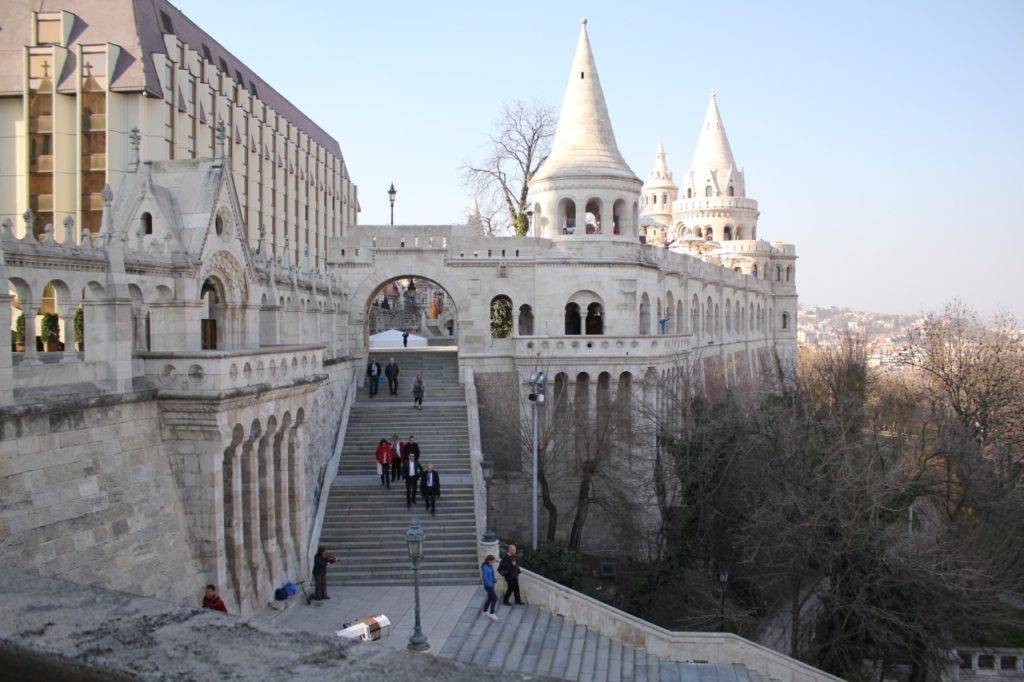
Daily cost: €57.68
Budapest has become one of the most sought after cities to explore in Europe. The capital city of Hungary has a high supply of accommodation, making it affordable to stay for a while.
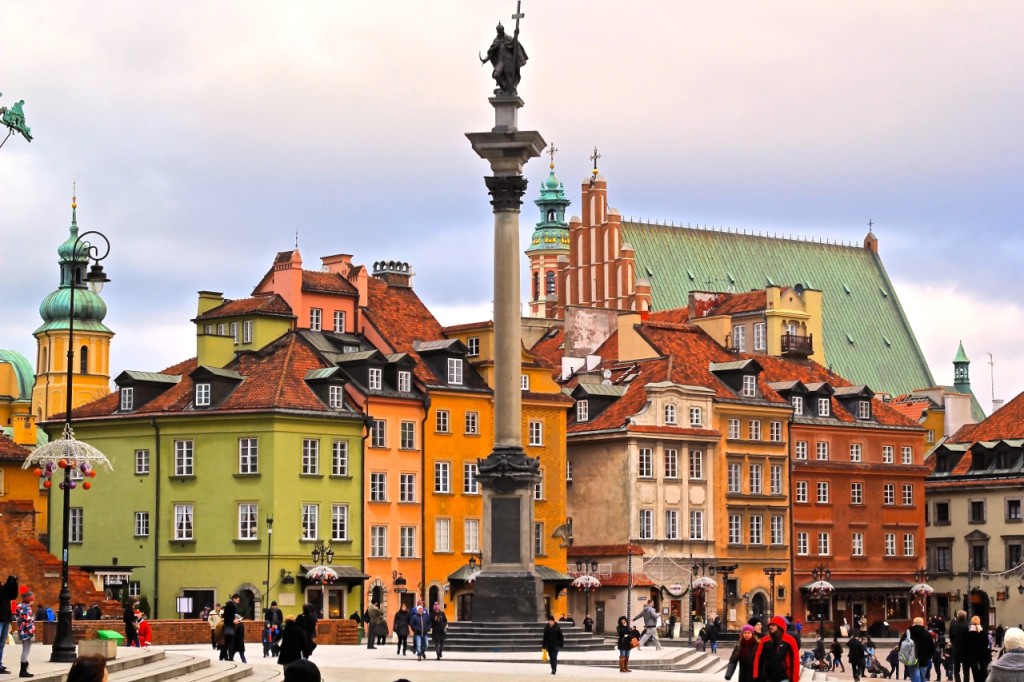
Daily cost: €58.58
Finally we round out our list with Poland. This country is often overlooked by visitors, although many travellers make their way to Krakow in the South. However if you make it all this way, I would strongly encourage you to spend more time in Poland! The capital city of Warsaw has been one of my favourite capital cities in Eastern Europe.
For more of my adventures, follow along on Instagram .
Brooke Saward founded World of Wanderlust as a place to share inspiration from her travels and to inspire others to see our world. She now divides her time between adventures abroad and adventures in the kitchen, with a particular weakness for French pastries.
Find me on: Twitter | Instagram | Facebook

Los Angeles
Plan a trip
First trip solo
Packing guide
20 Best Places for Solo Female Travel
Travel after a break up
20 Places in your 20’s
WAYS TO TRAVEL
Solo travel
Adventure travel
Luxury travel
Learn a language
Become a blogger
THE BACKPACKER INDEX:
Europe’s most (and least) affordable cities.
Planning a backpacking trip around Europe? If you're a budget savvy traveller in need of a little inspiration, you're in luck.
The Backpacker Index is designed to help you make an accurate budget for when you visit Europe, by ranking the daily price of a hostel, two public transportation rides, three budget meals, the cost of one cultural attraction and three inexpensive beers (or wines) for each day in each city.
Use the filters below to discover the most affordable cities in Europe to go backpacking.
Sort by (most affordable):
Cost per day ( $ )

- Compare cities
- Compare countries
- North America
- Latin America
- Middle East
- Country Ranking
- For Human Resources
- International Schools
- Cost of Living
Expatistan's Cost of Living Map of Europe

This map shows only the top cities in the world. We also have a list of all the cities available in Expatistan .
The color of each marker corresponds with the cost of living in the city red markers show more expensive cities green ones show cheaper cities Moving the mouse on top of a city will show its name and the Cost of Living Index of that city.
What is the Cost of Living Index? To calculate each city's Price Index value, we start by assigning a value of 100 to a central reference city (that happens to be Prague). Once the reference point has been established, the Price Index value of every other city in the database is calculated by comparing their cost of living to the cost of living in Prague. Therefore, if a city has a Price Index of 134, that means that living there is 34% more expensive than living in Prague.
Expatistan Cost of Living Index in Europe
Price index:, recent comparisons.
- Cost of living in Shiraz is 14% more expensive than in London
- Cost of living in Buenos Aires is 20% cheaper than in Mexico City
- Cost of living in Barcelona, Spain is about the same as in Madrid
- Cost of living in Madrid is 34% cheaper than in Paris
- Cost of living in Buenos Aires is 6% cheaper than in Santiago, Chile
- Cost of living in New York City is 38% more expensive than in Sydney
- Cost of living in Hong Kong is 31% cheaper than in New York City
- Cost of living in Mexico City is 42% more expensive than in Bogotá
- Cost of living in London is 42% more expensive than in Dubai
- Cost of living in Madrid is 7% cheaper than in Montevideo
- Cost of living in Vancouver is 6% cheaper than in Toronto
- Cost of living in Singapore is 24% more expensive than in Hong Kong
Compare other countries
- Compare the cost of living in Canada with Argentina
- Compare the cost of living in Spain with Germany
- Compare the cost of living in Israel with Guyana
What is Expatistan?
Expatistan is a cost of living calculator that allows you to compare the cost of living between cities around the world. The comparisons allow you to get a better understanding of the cost of living of any city before you move there.
What makes us unique is that we collect the prices that we use to calculate our cost of living index from visitors like you. Naturally, the more data entered, the more accurate the index and the calculations will be.
That's why we need your help to keep prices accurate and up to date. You can help by entering the prices that you know in Athens.
Prices recently added
- Basic lunchtime menu (including a drink) in the business district in Lviv costs 270₴ (7 minutes ago)
- Combo meal in fast food restaurant (big mac meal or similar) in Santiago, Chile costs CH$6,000 (16 minutes ago)
- 3 lb bag of apples in Fort Lauderdale, Florida costs $3.67 (21 minutes ago)
- 1 liter of gasoline in Porto Alegre costs R$ 10 (about 1 hour ago)
- Monthly rent - 85 m2 furnished accommodation in expensive area in Braga costs €800 (about 1 hour ago)
- Basic lunchtime menu (including a drink) in the business district in Lisbon costs €15 (about 2 hours ago)
Make a different comparison:
Collaborative international cost of living index, you enter the prices, we make the comparisons.
- Frequently Asked Questions
- Cost of Living Index
- What is it?
- How does it work?
- Who are we?
- Terms and Conditions
- Privacy policy
- Cookies policy
- Cookies settings
© 2009-2024 Expatistan.com

- Find destinations for a budget
- Calculate budget for a destination
and these destinations are
With a budget of, i / we like to stay for, with a total of, and it should be, for food i / we will go mainly to, at dinner i / we will drink mainly, i / we will get around mainly by, and usage during my / our stay is.
- Book your trip
- Buy your gear
- Find Inspiration
Latest special reports

Islands Report 1 – Coming Soon
Cities report 1 – coming soon, countries report 1 – coming soon, latest travel ranking videos.

Be the first to get updates on your social network
We are currently available in English and German
Get e-mail updates about latest World travel index reports
Ranking Countries
Total index, low-cost index, safety index, society index, infrastructure index, ranking cities, attractions index, popular links, inspiration, compare countries, find countries, budget-tool, overall index, best cities and islands, compare cities, find cities, best cities by country, compare islands, find islands, water activities index, best islands by country, how we rate, tools-guide.
- Odnoklassniki
- Facebook Messenger
- LiveJournal
US Travel Header Utility Menu
- Future of Travel Mobility
- Travel Action Network
- Commission on Seamless & Secure Travel
- Travel Works
- Journey to Clean
Header Utility Social Links
- Follow us on FOLLOW US
- Follow us on Twitter
- Follow us on LinkedIn
- Follow us on Instagram
- Follow us on Facebook
User account menu
Travel price index.
MONTHLY INSIGHTS December 20, 2023
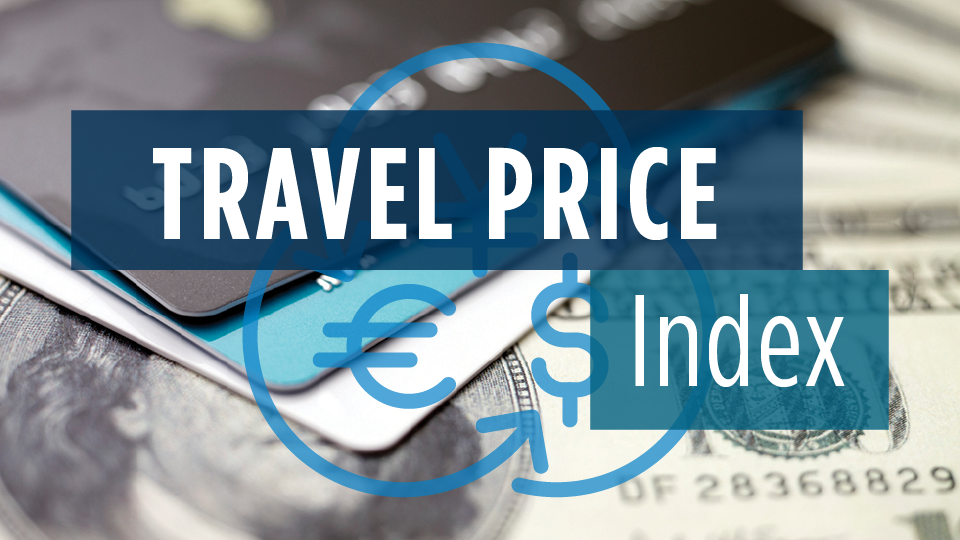
The Travel Price Index (TPI) measures the cost of travel away from home in the United States. It is based on the U.S. Department of Labor price data collected for the monthly Consumer Price Index (CPI). The TPI is released monthly and is directly comparable to the CPI.
Please see attached table for the latest data.
Member Price: $0
Non-Member Price: $0 Become a member to access.
Travel, Tourism & Hospitality
Industry-specific and extensively researched technical data (partially from exclusive partnerships). A paid subscription is required for full access.
- European travelers most concerned with rising travel costs 2023, by country
Countries with the highest share of travelers concerned with rising travel costs and personal finances in Europe as of September 2023
- Immediate access to 1m+ statistics
- Incl. source references
- Download as PNG, PDF, XLS, PPT
Additional Information
Show sources information Show publisher information Use Ask Statista Research Service
October 2023
September 11 to 26, 2023
4,052 respondents
18 years and older
respondents who were most likely to travel within Europe in the next 6 months; Europeans who took at least two overnight trips between 2020 and 2022
Online survey
The source displayed only the four countries with the highest share of respondents who were concerned per each category. The survey included respondents from the following countries: Germany, United Kingdom, France, Netherlands, Italy, Belgium, Switzerland, Spain, Poland, and Austria.
Other statistics on the topic Impact of inflation on travel and tourism worldwide
Accommodation
- HICP inflation rate for hotels and similar accommodation in the EU 2017-2024
- CPI inflation rate of travel and tourism services in the UK 2023
- Change in the travel price index in the U.S. December 2023, by industry
Food & Drink Services
- HICP inflation rate for restaurants and cafés in the EU 2017-2024
To download this statistic in XLS format you need a Statista Account
To download this statistic in PNG format you need a Statista Account
To download this statistic in PDF format you need a Statista Account
To download this statistic in PPT format you need a Statista Account
As a Premium user you get access to the detailed source references and background information about this statistic.
As a Premium user you get access to background information and details about the release of this statistic.
As soon as this statistic is updated, you will immediately be notified via e-mail.
… to incorporate the statistic into your presentation at any time.
You need at least a Starter Account to use this feature.
- Immediate access to statistics, forecasts & reports
- Usage and publication rights
- Download in various formats
You only have access to basic statistics. This statistic is not included in your account.
- Instant access to 1m statistics
- Download in XLS, PDF & PNG format
- Detailed references
Business Solutions including all features.
Statistics on " Impact of inflation on travel and tourism worldwide "
- Change in the travel price index vs. consumer price index in the U.S. 2022-2023
- Impact of high prices on travel plans in the U.S. 2023
- Share of U.S. travelers changing their holiday plans due to inflation 2023, by income
- Consumers who spent less on travel and dining out in the U.S. 2023, by income
- Annual average HICP of travel and tourism services in the EU 2019-2023
- HICP inflation rate of travel and tourism services in the EU 2024
- Europeans' main concerns about trips within Europe 2023
- Share of Europeans believing that inflation impacted the desire to travel 2023
- Reasons to not travel long-haul to Europe worldwide 2023, by country
- Annual average CPI inflation rate of travel and tourism services in the UK 2019-2023
- Main barriers to taking overnight domestic trips among adults in the UK 2023
- Share of Britons thinking that cost of living might impact holiday plans 2023, by age
- Britons' main responses to the impact of cost of living on vacations 2023
- Main issues for business travel according to travel suppliers worldwide 2024
- Main issues for business travel according to travel managers worldwide 2024
- Main issues for business travel worldwide 2024, by region
Other statistics that may interest you Impact of inflation on travel and tourism worldwide
Impact on travel in the United States
- Premium Statistic Change in the travel price index vs. consumer price index in the U.S. 2022-2023
- Premium Statistic Change in the travel price index in the U.S. December 2023, by industry
- Premium Statistic Impact of high prices on travel plans in the U.S. 2023
- Premium Statistic Share of U.S. travelers changing their holiday plans due to inflation 2023, by income
- Premium Statistic Consumers who spent less on travel and dining out in the U.S. 2023, by income
Impact on travel in Europe
- Basic Statistic Annual average HICP of travel and tourism services in the EU 2019-2023
- Basic Statistic HICP inflation rate of travel and tourism services in the EU 2024
- Basic Statistic HICP inflation rate for restaurants and cafés in the EU 2017-2024
- Basic Statistic HICP inflation rate for hotels and similar accommodation in the EU 2017-2024
- Premium Statistic Europeans' main concerns about trips within Europe 2023
- Premium Statistic European travelers most concerned with rising travel costs 2023, by country
- Premium Statistic Share of Europeans believing that inflation impacted the desire to travel 2023
- Premium Statistic Reasons to not travel long-haul to Europe worldwide 2023, by country
Impact on travel in the United Kingdom
- Premium Statistic Annual average CPI inflation rate of travel and tourism services in the UK 2019-2023
- Premium Statistic CPI inflation rate of travel and tourism services in the UK 2023
- Premium Statistic Main barriers to taking overnight domestic trips among adults in the UK 2023
- Premium Statistic Share of Britons thinking that cost of living might impact holiday plans 2023, by age
- Premium Statistic Britons' main responses to the impact of cost of living on vacations 2023
Impact on global business travel
- Premium Statistic Main issues for business travel according to travel suppliers worldwide 2024
- Premium Statistic Main issues for business travel according to travel managers worldwide 2024
- Premium Statistic Main issues for business travel worldwide 2024, by region
Further Content: You might find this interesting as well
type your search above
Choose your language
- News & Resources
European road freight rates Q1 2024: Both spot and contract rates fall

Europe | Bath
14 may 2024 · prosperity, the upply x ti x iru european road freight rates index for europe shows that q1 rates fell in both the spot and contract markets. the spot rate index is down 8.2 points year on year. meanwhile, falls in the contract rates index have slowed, down 1.0 point year on year..
The contract index fell to 127.6 index points in Q1 2024, dropping 2.6 points quarter on quarter (Q-o-Q). The spot index fell to 123.9 points after a more modest 1.1 point fall Q-o-Q. Year on year (Y-o-Y), the spot index is now down 8.2 points, while the contract index is down 1.0 point.
- The Q1 2024 European Road Freight Spot Rate Benchmark Index fell to 123.9 points, 1.1 points lower than in Q4 2023 and 8.2 points down Y-o-Y.
- The Q1 2024 European Road Freight Contract Rate Benchmark Index fell to 127.6, 2.6 points lower than in Q4 2023 and 1.0 point less than in Q1 2023.
- Following CO₂ toll changes in Germany, CO₂-based tolls came into effect in Austria and Hungary in January and the Czech Republic in March, increasing rates in those markets.
- According to companies managing tolls, these changes have resulted in a toll increase of 7.4% (+EUR 0.033/km) in Austria, 40% (+EUR 0.158/km) in Hungary and 13% (+EUR 0.026/km) in the Czech Republic.
- After the continuous falls seen in Q4 2023, diesel prices have been modestly rising since the beginning of the year.
- The outlook for spot rates across Europe suggests reduced rate declines as we enter a more stable demand environment in 2024.
Low demand continues to push spot rates down; however, the magnitude of spot rate declines is decreasing. This may indicate a less negative demand environment that could lead to rate normalisation.
Demand pressure is expected to continue a slight upward trajectory. At 2.4%, the European inflation rate in March was the lowest in 33 months, producing a 0.6 point growth in consumer confidence, according to McKinsey. The more stable demand picture reflected by these indicators has prevented extreme drops in spot rates.
Operating expenses, such as vehicle maintenance, insurance and tyre costs, remain elevated compared to previous years, keeping cost and contract prices high.
Diesel prices have fallen across Europe from their highs last year, easing some supply-side pressure. However, after the continuous falls seen in Q4 2023, diesel prices have been modestly rising since the beginning of the year: average diesel price at the pump was up 3% at the end of Q1 2024 compared to the beginning of January 2024.
Ti Head of Commercial Development Michael Clover said, “Though road freight rates fell again in Q1 2024, the expectation is that rates will pick up again through 2024. Costs are stubbornly high and we may well be moving into another challenging supply chain period, with indicators suggesting import volumes are recovering and supply chain bottlenecks, which have recently been masked by low volumes, becoming more acute again. That represents a bad combination for capacity which will filter into the road freight market over Q2 and Q3 and is likely to apply upward pressure to rates.”
Upply Chief Executive Officer Thomas Larrieu commented, “The road transport sector is facing a difficult economic environment. Weak demand caused spot and contract rates to fall in the first quarter of 2024, while costs for operators remain high. However, signs of economic recovery are beginning to emerge, with prices already rising on some routes in April 2024. We expect the situation to improve gradually throughout the year.”
Based on Ti data, the forecast for 2024 is a modest growth of 1.1% for the region in terms of road freight revenue market sizing. According to IRU’s latest forecast, EU road transport volume growth in 2024 is expected to improve to 0.4% y-o-y (up from -1.1% in 2023) due to real wage growth (as inflation decelerates) and a strong labour market that will support a rebound in consumption.
The implementation of Directive (EU) 2022/362 amending the Eurovignette Directive is still underway and adding upward pressure on rates (notably in Germany).
Following Germany, the CO₂-based tolls came into force in Austria and Hungary in January 2024, and in Czech Republic in March. According to the companies in charge of toll management in these various countries, it means a toll increase of 7.4% (+EUR 0.033/km) for Austria, 40% (+EUR 0.158/km) for Hungary and 13% (+EUR 0.026/km) for Czech Republic for the classic Euro VI tractor and semi-trailer used in Europe (which transports 63% of Europe’s road freight).
Adjustments to toll rates in the context of the Eurovignette Directive revision are expected in many European countries, starting with Sweden in May 2024 and Denmark next year. The Netherlands and Romania are expected to follow in 2026, and part of Belgium in 2028.
In France, where distance-based tolls are in place under long-term concession contracts granted to private operators, the Directive (EU) 2022/362 will only apply to new and renewed concessions after 24 March 2022, which will take place from 2032. However, a possibility has been foreseen to introduce a rate variation based on the CO₂ performance of vehicles on certain parts of the tolled network (notably highway A35 close to the German border) from 2025 onwards.
IRU Senior Director for Strategy and Development Vincent Erard added, “Low demand continues to push down road freight spot rates. Contract rates are also decreasing but only marginally due to higher operating costs. New CO₂ tolls are notably adding to costs, rising recently, for example, by 40% in Hungary and 83% in Germany. Increasing CO₂ tolls on existing fleets without having alternative zero-emission vehicles, infrastructure and incentives available for operators is counterproductive. We also need to promote proven efficiency measures for operators, especially SMEs, to accelerate decarbonisation progress.”
Browse more news
Money blog: Tourist taxes being imposed across Europe (and in UK) - here's how much they all are
An increasing number of cities are either imposing or increasing the cost of tourist taxes on visitors. Read this and our other Weekend Money content below, and let us know your thoughts. We'll be back with live updates on Monday.
Saturday 18 May 2024 17:03, UK
Weekend Money
- How to sell your home without an estate agent
- Tourist taxes to watch out for in popular holiday destinations
- Childcare vouchers, hard work and new skyscrapers: What readers have said this week
- Three things you need to know from Money this week
Best of the week
- The rise of Michelin starred 'fast food'
- How much do buskers make?
- Basically... What is PIP - and what could government changes mean?
- How to make sure your car passes its MOT
- Money Problem : My workplace wants to pay us by the minute - what can I do?
- Best of the Money blog - an archive
Ask a question or make a comment
By Ollie Cooper , Money team
Estate agent fees are one of the big expenses in selling a house - but rule changes and the rise of private sale websites have made it more common for people to go it alone.
But how easy is it - and what do you need to know? We spoke to industry experts to find out.
Firstly, what do estate agents do for their money?
An estate agent will typically charge in the range of 1%-3.5% of the sale price.
That means for the average house price (£284,691 from December) you could pay anywhere from £2,846 to £9,964 in commission fees.
"When you use an estate agent, their fee includes taking professional photographs, advertising your home, conducting property viewings, and negotiating a price on your behalf," says Jack Smithson from the home ownership site Better.co.uk .
In addition, an estate agent will compile comprehensive details of your house, including room sizes and descriptions of fixtures and fittings.
"They will also provide a concise write-up about the local area, highlighting amenities, schools, and transportation links," Jack adds.
And they'll conduct checks on buyers for you (more on this later).
It sounds like a lot, but...
"Selling your home yourself can be a manageable process with a few key steps," Jack says.
Preparation
You should begin by thoroughly researching house prices in your area, using websites like Rightmove and Zoopla - but seek free valuations from local estate agents to ensure you have a realistic asking price in mind.
Next, you want to take high-quality photos of your house.
Jack advises using tutorials on YouTube to learn new shooting and editing techniques that can take you to the next level.
You then want to write down what makes your home unique.
"While browsing other listings for inspiration, take it a step further by emphasising what you love about living in your home and the surrounding area," Jack suggests.
"Whether it's the refreshing scent of the coastline or the tranquil sounds of village life, incorporating these details can help potential buyers visualise living there," he advises.
Like using YouTube for photography tips, you can use free tools such as ChatGPT and Grammarly if you need help with your writing, Jack says.
Advertising
This is probably the biggest perk of going through an established estate agent - your home is much more likely to be viewed because they will have an established audience and a market. But it's very possible to do it alone.
"When it comes to advertising your home, explore a variety of avenues including local newspapers and social media," Jack says.
"Consider using websites like Strike, which allow individuals to list their properties for free on platforms like Rightmove," he suggests.
Viewings
Once you've secured some viewings, you've got the opportunity to make it a bit more personal than estate agents ever could - a real advantage.
"Explain the reasons behind your decision to purchase the property, highlight its unique features, and share the aspects of your neighbourhood that make it a desirable place to live," Jack says.
The small things matter when showing people round - so try to take an objective look around before you bring anyone in.
Do the things you'd do normally - make sure it smells nice and it's clean and tidy.
"Lastly, it's worth knowing that you must legally provide potential buyers with a free Energy Performance Certificate (EPC)."
The sale itself
Perhaps the most daunting aspect is the physical exchange of contracts and money.
An estate agent would typically oversee the process of the initial offer acceptance to the transfer of keys to the new owner.
However, if you go it alone, you'll need to become the central point of contact - bridging the gap between your solicitor or conveyancer and the buyer and their legal representative.
"Once you've accepted an offer on your property, your first task is to draft what's called a memorandum of sale," Jack says.
This document is a written confirmation of your acceptance of the offer and details the agreed price along with any specific conditions you've both agreed to.
"It's then recommended to engage the services of a solicitor or conveyancer to ensure all legal obligations are met," Jack says (of course, you'll need to do this even if you have an estate agent).
The cost of hiring one typically ranges from a few hundred to over £1,000, depending on factors such as fixed fees, hourly rates, the complexity of the sale and additional costs like property searches or land registry fees.
"In the absence of an estate agent, you'll be responsible for keeping your buyer informed about the progress of the sale. This involves regular updates on the status of legal procedures and any relevant developments," Jack says, before adding that this can actually be a good thing.
"By taking on these responsibilities independently, you'll have greater control over the sale process. However, it will require you to be exceptionally organised, and you'll need to be very good at communicating too."
Any risks to be aware of?
Rita Patel, legal director at law firm Browne Jacobson , tells us the biggest risk for people selling their properties without an estate agent is the lack of a vetting and verification process of the potential buyer.
Estate agents will verify the buyer's identity and check the buyer's proof and source of funds - without this, there's no way to assess the buyer is legitimate and can afford to buy.
"Whilst this process is something lawyers can help with, this is often at an additional cost, and you'll need to start from square one if there is an issue with a potential buyer's identification and/or financial eligibility," Rita says.
More generally, selling without an agent can extend the time it takes to sell.
"Zoopla suggests this timeframe is normally around 17-34 weeks, but with no one on hand to consistently promote and drive the property sale at all stages, going solo drags this process out," Rita says.
"Agents can also help mediate any potential breakdowns in communication between the buyer and seller - reducing the likelihood of having to go back to market and start again."
The advantages
Laura Owen-Brown, a PR manager from Gloucestershire, tells us she is set to sell her house without an estate agent in the near future.
"My disappointment with estate agents stems from their lack of familiarity with the properties they attempted to sell me when I was buying my current house," she says.
"They couldn't tell me about the details that truly matter, like the optimal times for sunlight in the garden, how much council tax I'd pay, what the roof was made of, the places I could walk my dog off lead or the impact of post-football match traffic on Sundays.
"These types of details can shape the experience of living in a house for years and are just as important as the square footage, EPC rating or how many bedrooms a property has," she adds.
She says the current "transactional" approach to selling houses feels "impersonal and outdated" to her.
"Yes, I'll have to handle more admin, but the savings in both money and time will make it worthwhile. Liaising with buyers and solicitors directly without a third party slowing everything down will mean I can be in control and have transparency throughout the process, especially during negotiations," she says.
All in all...
As Laura says, it's very much a case of whether you can stomach the admin and are happy to take the risks on background financial checks.
If you are aware of all the above and willing to take on the organisational burden, you could save yourself a serious chunk of cash.
As we've been reporting in the Money blog over the last few months, an increasing number of cities are either imposing or increasing the cost of tourist taxes on visitors.
Many say they are preventing damages from overtourism, as well as funding local infrastructure and businesses.
Here are the latest tourist fees for the most popular spots in Europe...
Tourists visiting Venice for the day will have to pay a €5 entry fee to enter the city between the hours of 8.30am and 4pm.
Meanwhile, those staying overnight in Venice are charged a fee between €1 to €5 within the accommodation price for the first five consecutive nights.
People visiting the Spanish city now have to pay €3.25 if they're staying in official accommodation, up from €2.75.
Manchester
Visitors must pay £1 per room, per night across 73 hotels.
The scheme, which has raised more than £2m within a year, is for improvements to attract more tourists.
Tourists must pay €2 per person for every night they stay, although this is only applied for a maximum of seven nights.
The Greek government has introduced a Climate Crisis Resilience Fee to charge tourists anywhere from €0.50 to €10 per room, per night.
The amount depends on the hotel category and the time of year.
Visitors to the Croatian city must pay €2.65 per person, per night throughout April to September.
However, the fee has been temporarily reduced to €1.86 for the rest of this year.
Different amounts are charged depending on the type of accommodation.
The most expensive charge is €14.95 for a stay in palaces, and €0.65 at one or two-star campsites, per person, per night.
Those staying in a typical four-star hotel are charged around €8.
Those staying in the Hungarian capital are charged an additional 4% each night, which is calculated based on the price of the room.
Tourists in Berlin must pay 5% of the room price, excluding VAT and service fees.
The tourist tax here has increased from €0.82 to €1.97 per day.
Prices researched by travel insurance site Quotezone.co.uk
The main topics from the Money blog that got you commenting this week were...
Government-funded childcare
- Michel Roux Jr's comments about the future of the restaurant industry
Nearly 600 new skyscrapers for London
From last Sunday, eligible working parents of children from nine-months-old in England have been able to register for access to up to 15 free hours of government-funded childcare per week.
Those hours can be claimed from September.
Some readers pointed out the T&Cs...
This 15 hrs a week is for term time ONLY. So full-time working parents will have to either tell their employer they can't work in school holidays or pro-rata it across the year which is 10 hours a week. Yvonne grandma
Others said it spoke to issues in the wider childcare sector...
Is the government going to give pay rises to nursery staff? They are very low paid staff, and can't get enough staff as it is!! Nurseries may have to close if they don't get staff, so parents won't be able to take up the offer!! What is the government going to do about it? Carol
Chefs or delivery drivers?
Celebrity chef Michel Roux Jr has suggested that restaurants may only open three days per week because young people prefer other jobs - like delivering parcels.
"Just because I worked 80 hours a week or more doesn't mean the next generation should," he said.
"Quite the contrary. That is something that we have to address in our industry."
Readers said...
That's because one [job] is on the verge of slave labour and one definitely is slave labour. And the latter I'm referring to is working in a kitchen for a chef. Realist2024
Spent 35 years working as a chef. Young people nowadays are not willing to do the extra hours (usually unpaid) and work every weekend. Godsends like my generation of chefs did and do. Bucks
There's been considerable backlash in our comments section after a thinktank said a total of 583 skyscrapers are "queuing up in the pipeline" to be built across central London.
That is more than double the 270 built in the past decade...
"600 new skyscrapers on way for London" while the majority are struggling. When will something serious be done about growing wealth inequality in the UK? A growing economy is useless while the gap between the ultra rich and everyone else increases. Qwerty1
How many unnecessary skyscrapers for London? It's fine, as long as they are not made using steel, glass, concrete or bricks - don't people know there's a climate emergency? Shanghaiwan
Who's paying for it? What about the North? treelectrical
The energy price cap is set to fall by about 7% in July, a respected energy markets researcher has said.
Ahead of next Friday's announcement by Ofgem for the July-September period, Cornwall Insights said: "For a typical dual fuel household, we predict the July price cap to be £1,574 per annum" - a drop from £1,690.
Looking further ahead, it forecasted the cap will rise again slightly in October, before falling in January next year.
"A predicted 7% drop in energy prices in July is clearly good news, with the price cap looking likely to hit its lowest level in over two years," a spokesperson for Uswitch said.
Around 100 more prosecutions of sub-postmasters unrelated to the Horizon scandal could be "tainted" , a Sky News investigation has found, as officials worked with now discredited Post Office investigators to secure convictions.
The prosecutions of Post Office staff were led by the Department for Work and Pensions (DWP) between 2001 and 2006.
It is understood these usually involved the cashing in of stolen order books.
The Post Office itself wrongly prosecuted hundreds of sub-postmasters between 1999 and 2015 - based on evidence from the faulty Horizon accounting system.
Read more from our business correspondent Adele Robinson by clicking here ...
The UK's mega rich are dwindling in a sign Britain's "billionaire boom has come to an end" , according to the latest Sunday Times Rich List.
The list reveals the largest fall in billionaires in the guide's history - from a peak of 177 in 2022 to 165 this year.
While the combined wealth of the list's 350 wealthiest individuals amounts to more than £795bn - larger than the GDP of Poland - the guide's compiler says time will tell what impact a drop in billionaires could have.
"This year's Sunday Times Rich List suggests Britain's billionaire boom has come to an end," Robert Watts said.
Read on here ...
The Money blog is your place for consumer news, economic analysis and everything you need to know about the cost of living - bookmark news.sky.com/money.
It runs with live updates every weekday - while on Saturdays we scale back and offer you a selection of weekend reads.
Check them out this morning and we'll be back on Monday with rolling news and features.
The Money team is Emily Mee, Bhvishya Patel, Jess Sharp, Katie Williams, Brad Young and Ollie Cooper, with sub-editing by Isobel Souster. The blog is edited by Jimmy Rice.
The Body Shop’s administrators are to launch an auction of the chain after concluding that an alternative restructuring of one of Britain’s best-known high street retailers was not viable.
Sky News has learnt that FRP Advisory, which has been overseeing the collapsed business since January, is to begin formally sounding out potential buyers in the coming weeks.
The move raises the prospect of new owners taking control of The Body Shop, which was founded nearly half a century ago.
Read more here ...
The UK's mega rich are dwindling - in a sign Britain's "billionaire boom has come to an end", according to the latest Sunday Times Rich List.
Published today, the list reveals the largest fall in billionaires in the guide's history - from a peak of 177 in 2022 to 165 this year.
"Many of our home-grown entrepreneurs have seen their fortunes fall and some of the global super rich who came here are moving away."
Top of the list is British-Indian businessman Gopi Hinduja and his family, whose wealth of £37.2bn is the largest fortune in the ranking's history.
But other familiar names in the list saw their riches fall, with Sir Richard Branson's total dropping by £2.4bn, which is back to his 2000 level.
Last year's top climber Sir Jim Ratcliffe, who bought a stake in Manchester United this year, fell two positions with a decline of £6.1bn.
Euan Blair, Tony Blair's eldest son, made the list for the first time, as did Sir Lewis Hamilton.
It comes as the UK continues to deal with a cost-of-living crisis, with new figures this week revealing a record 3.1 million food bank parcels were distributed over the course of a year.
The top 10:
- Gopi Hinduja - £37.2bn
- Sir Leonard Blavtanik - £29.2bn
- David and Simon Reuben and family - £24.9bn
- Sir Jim Ratcliffe - £23.5bn
- Sir James Dyson and family - £20.8bn
- Barnaby and Merlin Swire and family - £17.2bn
- Idan Ofer - £14.9bn
- Lakshmi Mittal and family - £14.9bn
- Guy, George, Alannah and Galen Weston and family - £14.4bn
- John Fredriksen and family - £12.8bn
A group of social media influencers have been charged in relation to promoting an unauthorised investment scheme.
The Only Way Is Essex (TOWIE) original cast member Lauren Goodger, 37, former Love Island star Biggs Chris, 32, and Celebrity Big Brother winner Scott Timlin, 36, also known as Scotty T, are among seven TV personalities alleged to have been paid to promote the scheme to their combined 4.5 million Instagram followers.
The others charged by the Financial Conduct Authority (FCA) include former Love Islanders Rebecca Gormley, 26, Jamie Clayton, 32, and Eva Zapico, 25 and TOWIE member Yazmin Oukhellou, 30.
The UK's financial watchdog brought the charges in a crackdown on "finfluencers" who use their online platforms to offer advice and information on various financial topics.
It alleges that between 19 May 2018 and 13 April 2021 Emmanuel Nwanze, 30, and Holly Thompson, 33, used an Instagram account to provide advice on buying and selling investments known as contracts for difference (CFDs) when they were not authorised to do so.
The watchdog said CFDs were high-risk investments used to bet on the price of an asset, in this case the price of foreign currencies.
It previously warned that 80% of customers lost money when investing in CDFs.
Mr Nwanze has been charged with running the scheme. He faces one count of breaching the general prohibition of the Financial Services and Markets Act 2000, and one count of unauthorised communications of financial promotions.
Ms Thompson, Mr Chris, Mr Clayton, Ms Goodger, Ms Gormley, Ms Oukhellou, Mr Timlin and Ms Zapico each face one count of unauthorised communications of financial promotions.
All nine will appear at Westminster Magistrates Court on 13 June.
The FCA asked anyone who believed they had sustained a loss due to the scheme to contact its consumer contact centre.
A hotel part-owned by Gary Neville and other ex-Manchester United legends has been named one of the best places to work in hospitality.
Each year, The Caterer releases its top 30 best places for employees in the sector, with the top six featuring some familiar names.
The list is compiled via anonymous employee survey - with no input from managers or owners.
Hotel Football, the only hotel with a rooftop five-a-side pitch, was among the top six venues selected by employees across the UK.
The hotel's benefits package was particularly well-praised by those who work there - given that it "prioritises the financial wellbeing of employees during the cost of living challenge".
Management at the hotel, which is situated next to Manchester United's Old Trafford stadium, was also praised for enhanced maternity, paternity, parental and adoption leave policies and a strong belief in diversity and inclusion.
The other five to make up the top six are The Biltmore in Mayfair, Cycas Hospitality (which has 18 locations across the UK), Dalata (which boasts some 1,000 employees), Gleneagles Hotel in Edinburgh and Nobu Hotel in Shoreditch, London.
The energy price cap is set to fall by about 7% in July, a leading thinktank has said.
Cornwall Insights said: "For a typical dual fuel household, we predict the July price cap to be £1,574 per annum" - a drop from £1,690.
Looking further ahead, it forecasted the cap to rise again slightly in October, before falling again in January next year.
Reacting to the news, Uswitch said the predicted drop was "clearly good news".
"The future still remains uncertain, and with the price cap changing every three months – currently expected to rise in October before falling slightly in January – it's crucial not to be complacent," Richard Neudegg, director of regulation, said.
However, "a predicted 7% drop in energy prices in July is clearly good news, with the price cap looking likely to hit its lowest level in over two years", he said.
He also urged households who want to lock in rates for price certainty to run a comparison to see what energy tariffs are available to them.
"There are many 12-month fixed tariffs available at rates cheaper than the current price cap, and even some that are 2% below these new predicted July rates," he said.
Be the first to get Breaking News
Install the Sky News app for free


IMAGES
VIDEO
COMMENTS
The following travel cost rankings for countries in Europe are calculated based on the travel budgets of real travelers. Also referred to as a Travel Cost Index, or a Backpacker Index, the countries below are in order from most to least expensive by their average daily travel price, per person, per day.
4- Krakow, Poland. Krakow is just about as cheap as Budapest (below), essentially tying as Europe's cheapest major tourist city. We've always had it pegged as an excellent bargain because it's also a charming and historic city and it would be worth a visit even if prices were much higher.
In fact, average consumer prices across all items rose 3.5% year-over-year through March. According to NerdWallet's Travel Price Index, the overall cost of travel is down 2% from the same month in ...
Check the news of course, and also keep in mind that Istanbul is the most expensive place in Turkey and you can visit most other popular places in the country for quite a bit less. Currency: Turkish lira. Best cheap & central 3-star hotel: Minel Hotel - 586/night. Transportation: 50.00. Meals: 520.00.
Rental Apartments: Airbnb is huge in Europe so it's easy to find an affordable place in just about any city. A basic studio/1br will typically cost €60-€180/night. Budget Hotels: You can typically find a basic, yet clean and comfortable hotel for around €80-€120/night. I mainly use Booking.com when traveling in Europe.
Price of Travel launched in 2010 to help travelers figure out just how cheap and how expensive the most popular destinations are around the world. Late that same year we launched our 2011 Backpacker Indexes, which ranked all of the destinations from cheapest to most expensive based on a fixed group of common items for budget travelers.
Berlin, Germany. Average Daily Budget Travel Cost: €36-€57 (Approx. $42-$65) Berlin has been the cheapest capital city in Western Europe for years so it has always attracted budget travelers. Prices are rising but there are plenty of great deals to be found on lodging and food. See complete price guide for Berlin.
See the box entitled "Developments in the tourism sector during the COVID-19 pandemic", Economic Bulletin, Issue 8, ECB, 2020. In 2020 the travel-related services amounted to approximately 10% of the weight in euro area services HICP. From February 2020 inflation for passenger transport dropped by about 20 percentage points, reaching a ...
The Cheapest Countries in Europe Serbia. Daily cost: €18.75. Serbia is the most affordable country on a day-to-day cost analysis. If you are carefully considering travel costs in Europe, Serbia is a great option for budget travellers. Belgrade is a surprising city with so much to offer visitors and I can highly recommend it! Ukraine. Daily ...
Prepare your journey to any place with World Travel Index now. Learn everything about costs, attractions, safety, and infrastructure of your travel destination.
Graph and download economic data for Harmonized Index of Consumer Prices: Transport for European Union (27 countries from 2020) (CP0700EU272020M086NEST) from Dec 1999 to Apr 2024 about EU, harmonized, Europe, transportation, CPI, price index, indexes, and price.
Published by. Ana M. López , May 26, 2023. The business travel cost in Europe reached a daily average of more than 326 U.S. dollars in the last quarter of 2021, making it the highest average ...
Published: March 29, 2023. BTN Europe's 2023 Corporate Travel Index is here. It's your free access to the managed travel industry's definitive guide to business travel costs in nearly 50 cities across Europe. Discover average hotel rates across five tiers, the cost of airport taxi transfers, average meal costs and city risk scores.
Cost per day ($) 0. 20. 40. 60. 80. 100. 120. ... x1 famous attraction, x3 budget meals, and x3 local beers using data collected from the Price of Travel Europe Backpacker Index. ... The featured cities are the cheapest countries to backpack in Europe according to Price of Travel data at the time of use (15/08/2018) but may fluctuate to ...
This ranking shows which countries offer the best conditions for a low-cost trip. The better the ranking and the higher the value, the cheaper travel in that country can be. The worse the ranking and the lower the value, the more expensive travel in this country can be.
Cost of living in João Pessoa is 24% cheaper than in Rio de Janeiro. Cost of living in Shiraz is 16% more expensive than in London. Cost of living in Madrid is 33% cheaper than in Paris. Cost of living in Barcelona, Spain is about the same as in Madrid. Cost of living in Mexico City is 43% more expensive than in Bogotá.
Travel Price Index | June 2022 The Travel Price Index (TPI) grew slightly slower (+1.0%) than overall consumer prices (CPI) in June 2022 (+1.3%) Airfare declined in June (-1.8% vs May), and registered the first monthly decline since Oct. 2021 Lodging fares also declined (-3.3%) Gas prices increased by 11% in June
Producer Price Index by Commodity: Transportation Services: Courier and Messenger Services, Except Air. Index Apr 2009=100, Monthly. Not Seasonally Adjusted Apr 2009 to Mar 2024 (Apr 11) Seasonally Adjusted Apr 2009 to Mar 2024 (Apr 11) Add to Data List. Add to Graph. Add To Dashboard.
We are currently available in. English and German. Get e-mail updates about latest. World travel index reports. Find destinations for your budget. Or calculate your budget for a specific destination. Use the access to all destinations and the budget needed for them.
Research: Developed by the U.S. Travel Association, the Travel Price Index (TPI) measures the one-month change in the cost of travel ("travel inflation") away from home in the United States on a seasonally adjusted basis and the 12-month change of the cost of travel away from home in the U.S. on a seasonally unadjusted basis. The TPI is released monthly and is directly comparable to the CPI.
European Travel Commission, Countries with the highest share of travelers concerned with rising travel costs and personal finances in Europe as of September 2023 Statista, https://www.statista.com ...
The Upply x Ti x IRU European road freight rates index for Europe shows that Q1 rates fell in both the spot and contract markets. The spot rate index is down 8.2 points year on year. Meanwhile, falls in the contract rates index have slowed, down 1.0 point year on year.
An estate agent will typically charge in the range of 1%-3.5% of the sale price. That means for the average house price (£284,691 from December) you could pay anywhere from £2,846 to £9,964 in ...
Prices for her other two US shows in New Orleans and Indianapolis are roughly the same. Sweden isn't the only budget-friendly city: Prices for Swift's stops in Portugal, Spain and Germany in ...